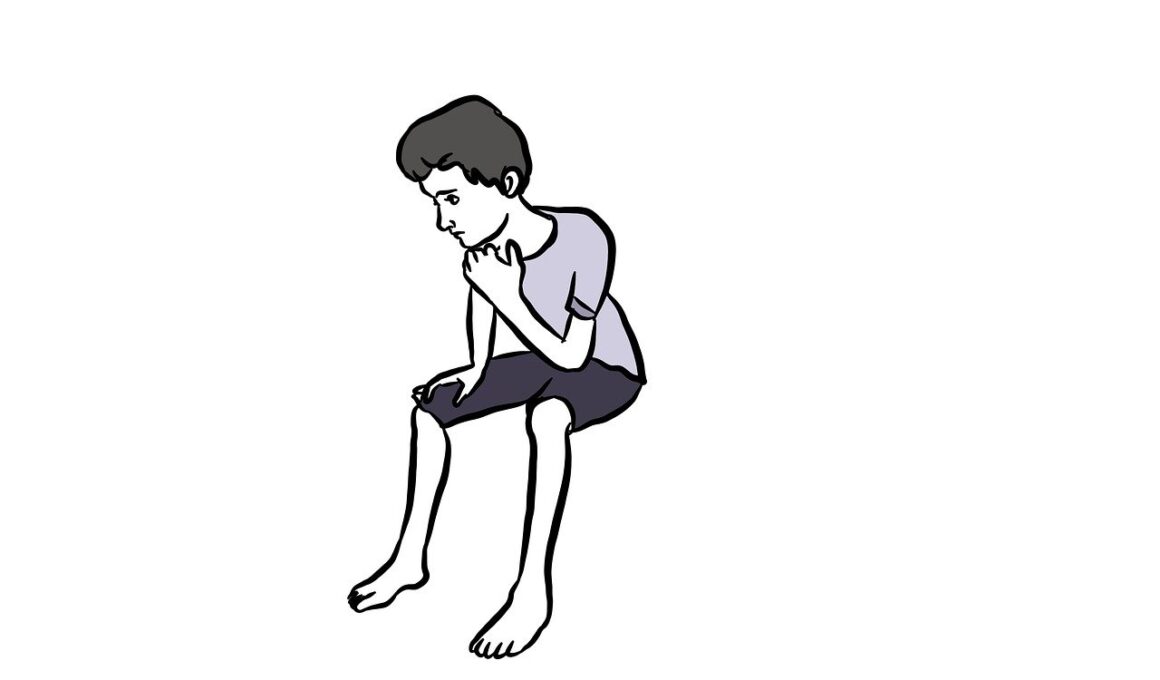Why Children Need to Learn Correct Posture Early
Teaching children about correct posture is crucial for their overall health and development. Proper posture not only helps in preventing musculoskeletal issues but also boosts their confidence. When children maintain appropriate posture, it improves their alignment, which significantly impacts their physical health in the long run. As they grow, children spend extended periods sitting at desks or using devices, making it essential to be mindful of their positioning. Adopting a correct posture reduces strain on the spine and surrounding muscles, which helps to prevent chronic pain. Moreover, enhanced posture has been linked to better focus and concentration in school settings. The synergy between good posture and cognitive performance cannot be overlooked. Children with proper alignment are more likely to engage confidently in social situations and sports, enhancing their social skills. Furthermore, learning about posture early paves the way for lifelong habits that can protect their well-being. Parents and educators must stress the importance of sitting correctly and standing tall, facilitating discussions about movements and postures during daily tasks. This initiative supports health education and awareness about better physical health.
Physical Benefits of Correct Posture
Good posture has numerous physical benefits that can positively influence a child’s well-being. First and foremost, correct posture alleviates undue pressure on the spine and skeletal structure. By ensuring the body is correctly aligned, children experience less fatigue and discomfort during school or play. Another significant advantage is improved breathing. A straightened spine allows for optimal lung expansion, which leads to increased oxygen intake. Enhanced lung capacity can elevate energy levels and contribute to overall vitality, which is essential for active children. Furthermore, with proper posture, blood circulation improves, ensuring that muscles receive adequate nutrients and oxygen throughout their activities. This foundational aspect forms the basis for effective learning and physical performance, fostering a sense of vitality essential for growth. In addition to physical health, correct posture can substantially shape the way children interact in social environments. They are more likely to exhibit self-confidence when standing or sitting straight rather than slouched. The social implications of good posture are profound, leading to improved relationships with peers and adults alike. Encouraging proper habits early is key to a healthy adulthood.
Understanding the implications of poor posture is vital for raising awareness among parents and caregivers. Many children may unknowingly adopt bad posture habits, often due to modern technology use, such as smartphones and computers. The extended time children spend hunched over devices can result in various long-term health complications. Some common issues linked to poor posture include spinal deformities, chronic back pain, and even problems with digestion. Early intervention is essential. It provides children with the knowledge to recognize their postural habits and make necessary adjustments. Encouraging breaks from screens and introducing activities that promote core strength and flexibility can combat the adverse effects of poor posture. Simple solutions like using ergonomic furniture and practicing reminders to sit up straight can make a considerable difference. Moreover, incorporating physical activities such as yoga or dance can help develop body awareness. Such practices not only support proper posture but also empower children to take charge of their health and fitness. Addressing these concerns collaboratively between parents, schools, and health professionals significantly increases the likelihood of children adopting better postural habits.
Long-term Effects of Bad Posture
The ramifications of poor posture extend far into adulthood, making it imperative to address these behaviors early on. When children develop bad posture, they are likely to carry these habits into their teenage years and beyond. As they transition into adulthood, issues stemming from improper posture can result in chronic conditions, such as spinal disorders, arthritis, or degenerative diseases. The lack of awareness surrounding this topic amplifies the existing problems, particularly in today’s digital age, where convenience often overshadows health. Additionally, poor posture can pose a significant obstacle to physical performance in sports and other activities, leading to limitations or injuries. Socio-emotional aspects should be addressed as well; poor posture can negatively affect self-esteem and discourage participation in social and extracurricular activities. Children who slouch may feel less confident in their interactions, leading to isolation and reduced opportunities for social development. By implementing strategies to promote awareness and education early on, we safeguard children’s futures and help them embrace a healthier lifestyle. Teaching about posture today will yield a generation aware of their bodies and committed to preventing future complications.
In an age where electronic devices dominate, the need for proper ergonomic habits cannot be overstated. Establishing a supportive learning environment is essential for nurturing good posture habits in children. Implementing ergonomic furniture tailored to a child’s size, such as adjustable desks and chairs, encourages healthy positioning for extended periods. Additionally, schools can incorporate educational programs targeting posture awareness and its significance into the curriculum, enhancing children’s understanding of their physical health. This multifaceted approach integrates learning with practical application, reinforcing desirable habits at school and home. Moreover, family plays a crucial role in shaping children’s posture habits. Parents can model correct posture during daily routines, showcasing the significance of maintaining awareness in various situations. Reinforcement through fun activities that include playful stretches or exercises helps to engage children meaningfully. Creative routines can motivate kids to adopt these habits without feeling burdened by strict requirements. Cultivating a supportive environment at home and school fosters collaboration that will yield lasting benefits in posture and overall health. Implementing these strategies now equips children with the tools they need to thrive both academically and physically.
Cultivating Awareness and Good Habits
Lastly, fostering awareness about the significance of good posture involves community engagement. Parents, schools, and health professionals must work together to instill knowledge in children from an early age. Workshops and seminars can be conducted to educate families about the benefits of proper posture and corrective practices. Interactive activities designed around posture awareness can also resonate more significantly with young audiences. For instance, incorporating technology such as posture tracking apps can offer a modern approach to encourage children to engage with their body mechanics actively. Such initiatives could empower kids to integrate what they learn into their daily lives while making learning enjoyable. Moreover, creating a sense of community around these initiatives not only educates children but also involves parents in understanding the relevance of these practices. Schools should also consider partnering with local health experts to provide resources and facilitate conversations about posture. Collaboration with community centers to organize regular events is essential for sustaining awareness. Engaging with local resources and professionals ensures that children receive consistent messages about maintaining posture, underscoring its importance effectively.
In summary, instilling correct posture habits in children is crucial for preventing a range of physical, mental, and social issues. By promoting good posture through education, community engagement, and support, children can fully realize their potential. Building awareness and emphasizing the significance of posture through hands-on activities ensures that children remain active in learning how to care for their bodies. The commitment to creating a culture that values proper posture begins at home and extends to schools and communities. As a result, children will develop healthier lifestyles that can serve them well into adulthood. Encouraging proper habits today will lead to a generation that appreciates the importance of physical health. The adoption of supportive educational programs can strengthen the collective understanding of posture, ultimately leading to healthier community members. Therefore, a collaborative effort among families, educators, and health professionals can make a significant difference in children’s lives as they learn to navigate the modern world. Addressing posture early equips them to face future challenges with confidence and strength, ensuring that they grow up as healthy, empowered individuals for years to come.
Teaching children about correct posture is crucial for their overall health and development. Proper posture not only helps in preventing musculoskeletal issues but also boosts their confidence. When children maintain appropriate posture, it improves their alignment, which significantly impacts their physical health in the long run. As they grow, children spend extended periods sitting at desks or using devices, making it essential to be mindful of their positioning. Adopting a correct posture reduces strain on the spine and surrounding muscles, which helps to prevent chronic pain. Moreover, enhanced posture has been linked to better focus and concentration in school settings. The synergy between good posture and cognitive performance cannot be overlooked. Children with proper alignment are more likely to engage confidently in social situations and sports, enhancing their social skills. Furthermore, learning about posture early paves the way for lifelong habits that can protect their well-being. Parents and educators must stress the importance of sitting correctly and standing tall, facilitating discussions about movements and postures during daily tasks. This initiative supports health education and awareness about better physical health.


